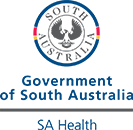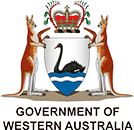De Quervain's disease
Key facts
- De Quervain's disease leads to pain due to the thickening of a protective layer around the tendons near your wrist.
- It is also called 'de Quervain tenosynovitis' or 'de Quervain syndrome.'
- Pain, swelling and tenderness around the thumb or wrist can make everyday tasks difficult.
- The exact cause is unclear, but repetitive motions, injuries, hormonal changes or wrist anatomy may play a role.
- Treatment may include rest, splinting, corticosteroid injections or surgery.
What is de Quervain's disease?
De Quervain's disease is a condition that leads to pain on the thumb side of your wrist. It happens when tendons in your wrist get trapped because of swelling in the protective layer around them. These tendons help move your thumb.
The condition is more common in females, especially during late pregnancy or after giving birth. You may also be at higher risk if you often make repetitive thumb or wrist movements. For example, lifting your baby or working with your hands.
It is also called 'de Quervain tenosynovitis' or 'de Quervain syndrome.'

What are the symptoms of de Quervain's disease?
De Quervain's disease leads to pain on the thumb side of the wrist. This pain can make everyday tasks more difficult, especially tasks that involve using your thumb or moving your wrist.
Common symptoms include:
- pain and tenderness — usually felt on the thumb side of your wrist that gets worse when you move your thumb or wrist
- pain spreading — the pain may spread to your thumb or up your forearm
- swelling and redness — you may notice swelling or feel tender at the base of your thumb or wrist
- difficulty with hand movements — some tasks, such as holding or gripping objects may feel painful
Without treatment, your pain may get worse.
CHECK YOUR SYMPTOMS — Use the Symptom Checker and find out if you need to seek medical help.
What causes de Quervain's disease?
The exact cause of de Quervain's disease is not fully understood.
The condition affects the tendons that control thumb movement. The channel through which these tendons pass becomes narrow due to thickening of the sheath (a protective layer around the tendons). This can make thumb movements painful and difficult.
Several factors may cause the sheath to thicken, including:
- repetitive movements — tasks that involve repeated thumb and wrist motions, such as when you work with your hands
- friction and strain — forceful thumb or wrist movements
- injury — a wrist injury may sometimes trigger the condition
- pregnancy and postpartum changes — hormonal changes and repetitive tasks, such as lifting your baby
- inflammation — swelling in the tendon sheath
- structural differences — some people's wrist anatomy may make tendon pain more likely
When should I see my doctor?
You should see your doctor if you think you may have de Quervain's disease. Early treatment is important.
Your doctor can examine you to check if you have de Quervain's disease, or another condition with similar symptoms such as osteoarthritis or nerve damage.
If you need to see your doctor but cannot wait for an appointment, you may be able to get treatment at a Medicare Urgent Care Clinic. Use the Service Finder to find your nearest one.
Seek urgent medical help if you have had a recent injury or trauma to your wrist or thumb, or notice a loss of motion in your thumb. These could be signs of a serious issue that needs immediate attention.
FIND A HEALTH SERVICE — The Service Finder can help you find doctors, pharmacies, hospitals and other health services.
How is de Quervain's disease diagnosed?
Your doctor may do one or more of these to diagnose de Quervain's disease:
- ask about your medical history — this will include discussing your symptoms
- physical examination — your doctor may check for tenderness, swelling or pain in the base of your thumb
- trigger tests — your doctor may ask you to perform specific hand or thumb movements that may trigger symptoms
- imaging tests — while you don't need imaging for a diagnosis, an x-ray or ultrasound may help rule out other conditions
ASK YOUR DOCTOR — Preparing for an appointment? Use the Question Builder for general tips on what to ask your GP or specialist.
How is de Quervain's disease treated?
Treatment focuses on pain relief and improving thumb and wrist movement. There are non-surgical and surgical treatment options that may help you.
Non-surgical treatment
Non-surgical treatments focus on pain relief. Your doctor may recommend these before considering surgery:
- Rest and splinting — splinting with a temporary thumb spica brace can reduce strain on your tendons. This may help with mild pain. Removable (semi-rigid) splints are often more helpful than rigid splints.
- Corticosteroid injections — injections into the protective layer around the tendons may help relieve pain. Many people find relief after one injection and further relief may happen after a second.
- NSAIDs (anti-inflammatory medicines) — may help relieve pain. They can be used as oral tablets or topical creams. These medicines are not suitable for everyone. Always check with your doctor or pharmacist before using them.
- Other therapies — such as, laser therapy, therapeutic ultrasound or acupuncture may help. Evidence for their effectiveness is limited.
Surgical treatment
If non-surgical methods do not provide relief, surgery may be an option. Surgery for de Quervain's disease reduces pressure on the tendons by loosening the tissue around them. It is usually done under a local anaesthetic.
What are the complications of de Quervain's disease?
If de Quervain's disease is not treated, the pain can persist. This can make everyday tasks more difficult. Sometimes, the discomfort may affect your ability to work. You may need to adjust your activities based on your pain.
Rarely, surgery can lead to complications, such as:
- injury to a nerve
- continued pain
- scarring
- infection
Can de Quervain's disease be prevented?
While the exact cause isn't understood, there are steps you can take to reduce your risk:
- Be mindful of risk factors, such as work or activities that put extra strain on your hands and wrists.
- Limit repetitive movements that might strain your tendons.
- Learn more about the condition and how to prevent recurrence.
Resources and support
- Australian Hand Therapy Association has information on de Quervain's disease, including causes, symptoms, treatment, and recovery.
- The University of Melbourne offers advice on posture at work during pregnancy.
You can call the healthdirect helpline on 1800 022 222 (known as NURSE-ON-CALL in Victoria). A registered nurse is available 24 hours a day, 7 days a week.
Looking for information for Aboriginal and/or Torres Strait Islander people?
NACCHO can help you find an Aboriginal Community Controlled Health Organisation (ACCHO) or Affiliate near you.
Learn more here about the development and quality assurance of healthdirect content.
Last reviewed: February 2025













